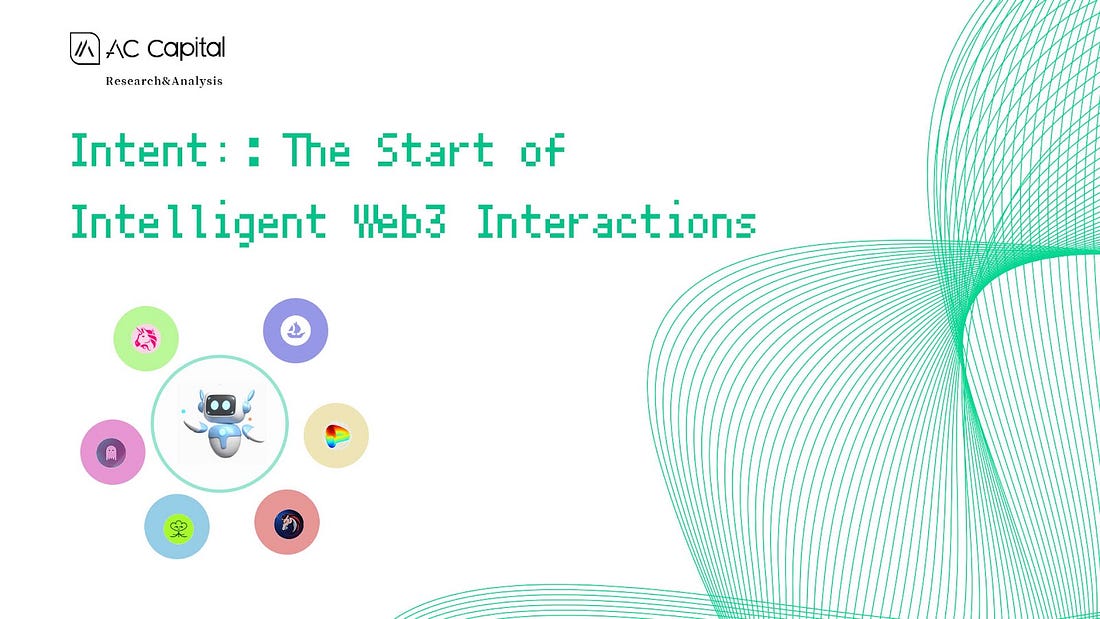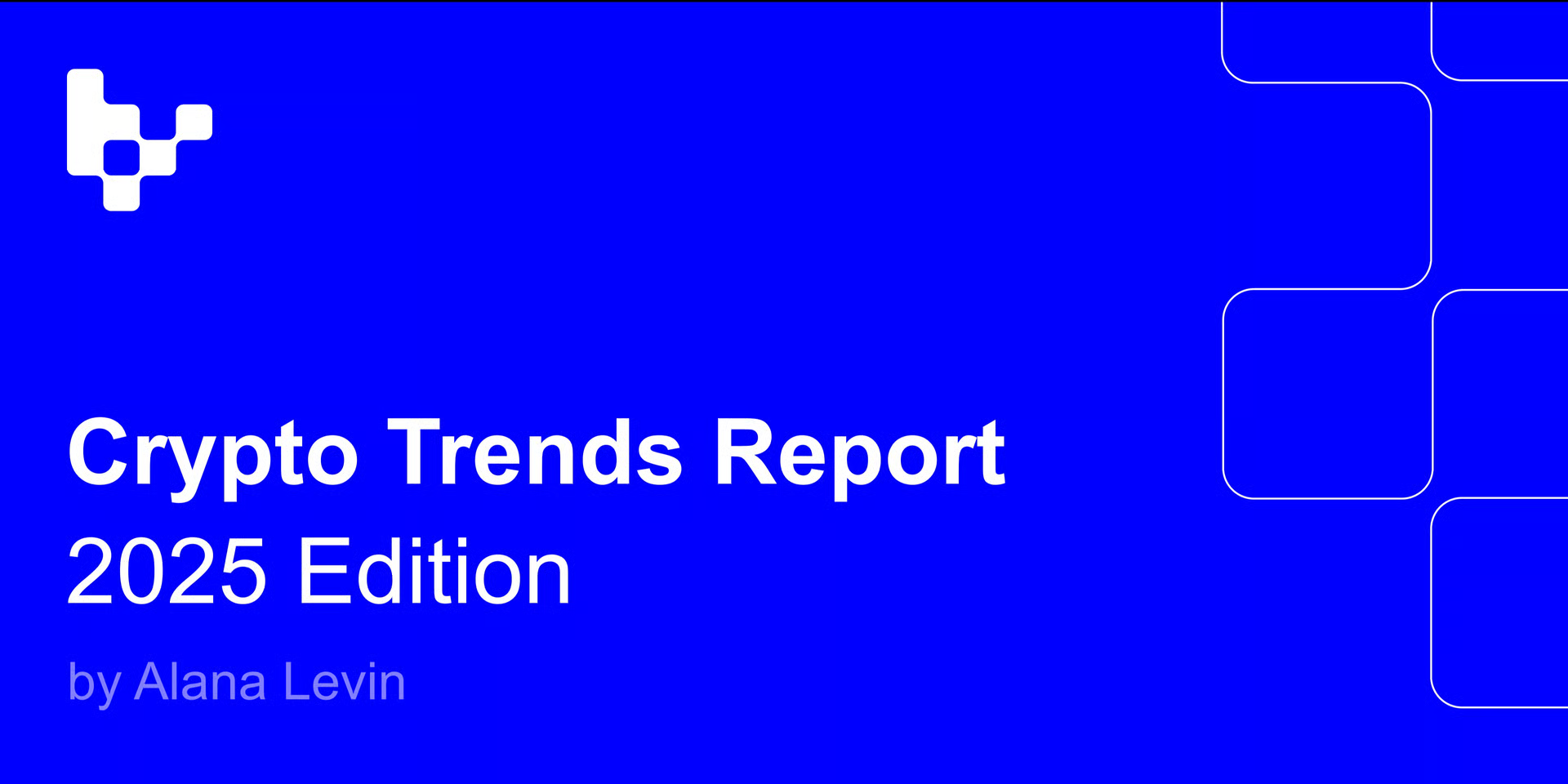Author: 0xDragon888
Introduction
This article combines Anoma and TG Bot to shed light on the understanding of intent, retracing the AI paradigm shift behind intent. It delves into the evolution of the concept of intent, interaction paradigms, current status, trends, and ultimately, it anticipates the challenges and prospects of Web3 interaction intelligence in the future.
TL;DR
- Understand Intent: From top to bottom–Anoma VS From bottom to top–TG Bot
- In-Depth Understanding of Intent: AI is the New UI–Complex commands VS simple intents
- Navigate Intent: Evolution of the concept of Intent, interaction paradigms, current state, and trends
- Guide Intent: Challenges and outlook for intelligent Web3 interactions
In June Paradigm’s official website released an article,《Intent-Based Architectures and Their Risks》which brought the concept of intent to the public for the first time, and protocols and infrastructure about intent have evolved rapidly and became a hot topic in the crypto world at the ETHCC conference in July.
Intent is not a new concept, as Mindao, the founder of DForce, said: the trend in the cryptocurrency world historically has been to abstract and automate operations all the way to the extreme, from aggregators, to CEX, to contract wallets, to cross-chain defi which is actually doing all that, to chainlink and more recently automated middleware, and more recently Telegram bot.
Intent, however, brings about new changes. While the past focused on product interactions, the AGI era revolves around human-computer interactions. AI/LLM (Large Language Models) hold the potential to further enhance Crypto interactions.
From top to bottom–Anoma VS From bottom to top–TG Bot
The last half year has been a firestorm of Intent-related agreements, projects and infrastructure, and instead of explaining the concept, here are 2 excellent examples to take you through it.
Although there are many projects related to intent, the most well-funded institutionally is Anoma Foundation, which completed its US$25M Series C financing in late May 2023. Against the background of serious homogeneity in Layer1, Anoma Foundation has opened up a highly differentiated and unique path, being the first to introduce an intent-centric architecture of Anoma (full-stack Dapp architecture) and Namada (privacy Layer1), and eventually gained a total of US$57.8M support from crypto institutions, ranking 7th in terms of financing amount for unlaunched Layer1/Layer2 protocols.
Reflecting on Anoma’s public speech at EthCC, founder Adrian Brink highlighted the magic of Anoma lies in: all interactions begin with intent, and user-expressed intent undergoes processing through the Black-box Architecture (also referred to as the Magic Happens). This magic box facilitates the core transaction flow based on intent-driven interactions.
Source:https://twitter.com/Delphi_Digital/status/1696626180752056764
- User Interaction: Users can send transparent, private, or protected intents to Anoma’s Black-box Architecture (intent gossip layer).
- Intent Collection and Matching: Anoma’s Black-box Architecture’s solver collects intents, performs state transitions, and matches counterparties for transactions.
- Transaction Processing: Matched transactions are submitted to the encrypted mempool, where validators package proposer-created blocks and send them to the execution layer for execution and validity verification. Ultimately, state root updates are completed.
Behind this entirely new form of interaction, the Anoma team identified pain points in the underlying blockchain protocols. They looked back to the first-generation Bitcoin with scriptable settlements and the second-generation Ethereum with programmable settlements, where architectural limitations led to current application protocols having at least one Web2 component, hindering trading discovery and resolution. They assert that Anoma’s intent-centered architecture represents the third generation of Dapp architecture in blockchain protocol evolution. It allows users to define the desired outcome states, achieving efficient and customizable privacy transactions at the intent level. The intent-centered Dapp architecture is ushering in a new era.
Source:Adrian Brink — The 3rd generation is intent-centric
Anoma, a high-capacity blockchain project with a novel technological architecture, is currently under development by a multidisciplinary team of 37 members at Heliax. Despite a two-year development journey marked by gradual progress, the Heliax development team has successfully established a comprehensive ecosystem of innovation.
- Anoma: with intent-centric universal Dapp architecture, it can be modularly deployed to L1, L1.5, L2, and embedded in various EVM frameworks with modular components to call;
- Namada: the privacy Layer1 of the Anoma ecosystem, employing the PoS mechanism and for asset-agnostic inter-chain privacy, which will be compatible with Ether and IBC chains in the future;
- AnomaVM: simplifies DApp application development on Anoma, using Juvix (an intent-centric programming language) and VampIR (a circuit programming language);
- Typhon: Cosmos-based Tendermint improves the Typhon consensus;
- Taiga: providing a unified execution environment for composable privacy, Taiga defines three types of intents: transparent intents, masked intents, and privacy intents.
Although many investment institutions such as CMCC Global, Electric Capital, Delphi Digital are enthusiastic about Anoma, and expressed the infinite potential of the future based on the intent-centric architecture. Although Anoma is currently laying a good technical foundation, it has yet to see exciting applications, while on the other hand, TG Bot is using on-chain automated trading tools to open up the application imagination of Intent-Centric scenarios.
Unibot is a Telegram-based trading bot (TG Bot) that allows users to automate DEX trading via Telegram and provides features such as place order, follow trading, DEX limit orders, privacy, anti-MEV, etc. It replaces the cumbersome interactions of Uniswap and provides chain users with a convenient DeFi interaction experience. Unibot also spawned a number of TG Bot copycat projects, and the current total market capitalization of the TG Bot track is close to US$200 million.
From top to bottom — Anoma is innovation while from bottom to top–TG Botis is change. Anoma starts from the underlying architecture based on intent, but the team progresses slowly; TG Bot brings users a brand new interaction interface on the chain, but it is not intelligent and has many security risks.
Both have the same goal — to simplify the user interaction experience and introduce a new programmable, customizable user interface–the User Intent Layer–that allows users to skip the complexity of on-chain interactions and define the status of a transaction based on user intent.
AI is the New UI:Complex commands VS Simple intents
The two examples above gave a basic understanding of Intent. The next step is to delve deeper behind the Intent, which is AI’s change to the lowest level of the crypto world — the user interaction interface.
The AI paradigm is introducing a third user interface paradigm in the history of computers, moving to a new interaction mechanism where users tell computers what they want rather than how to do it
- Paradigm 1: Batch processing
- Paradigm 2: Command-based interaction design
- Paradigm 3: Intent-based outcome specification
LLM-based generative AI brings disruptive changes to human-computer interaction, and LLM shows great potential in human-computer interaction, process planning, data processing, etc. It directly turns the original human-computer interaction with various software UI into interaction with Chatgpt chat windows, which is an unprecedented interaction experience, and LLM+crypto brings a brand-new proposition of intent-based interaction to the crypto world.
Source:https://www.nngroup.com/articles/ai-paradigm/
Evolution of the concept of Intent, interaction paradigms, current state, and trends
After deeply understanding the AI paradigm behind Intent, we further explore the evolution of the Intent concept. Intent is not a new concept, it has existed since the rise of search engines like Google in the Web2 era. Users can enter intents, and search engines provide relevant search results to satisfy those intents.
With the rise of e-commerce platforms like Amazon and eBay, intent-based architectures have undergone major changes. Users can now express the intent to purchase products, and platforms are responsible for logistics. In early 2017, Gartner released a report 《Innovation Insight: Intent-Based Networking Systems》that formally proposed the concept of Intent-based Networking, where the key is to present an interface to users where they only need to express what they want, and the platform will handle the business details.
Intent-based networking is the development trend of network automation and intelligence in the Web2 era. Gartner Research Vice President Andrew Lerner pointed out in 2017 that intent-based networking will be the “next big thing” in the network field.
Source:https://www.gartner.com/en/documents/3599617
The concept of “intent” in Web3 is not entirely clear, while there are some consensus perspectives:
- Paradigm’s definition states that intent comprises a set of declarative constraints that enable users to delegate the creation of transactions to specialized third-party participant networks while retaining complete control over the process.
- Anoma, with its foundational Dapp architecture based on intent, defines it as messages sent by users to express customized preferences. Intent serves as a set of rules through which users define what actions the system can perform, rather than prescribing specific execution paths.
- Propellerheads, in the context of intent-based transaction infrastructure, defines intent as the portion of a transaction that requires assistance from others. Intent simplifies complex transactions by outsourcing the challenging aspects to third parties.
In real-world applications of intent-based transactions in Web3, users initiate the creation of intent off-chain, subsequently outsourcing this intent to Solvers. This approach encapsulates the complexity of blockchain interactions, providing Solvers with the responsibility to manage while users retain complete control over the process on-chain. This approach effectively lowers the threshold for on-chain interactions.
Source:https://www.brink.trade/blog/powerful-intents-part-1
The concept of “intent” also introduces the LLM architecture paradigm–intent-centric, where the architecture revolves around user intent. Currently, protocols and infrastructures associated with intent-centric concepts are embedded within the interaction layer between users and crypto. Leveraging LLM, this setup aims to enhance the on-chain interaction experience.
LLM+Crypto introduces a new human-computer interaction paradigm that can directly translate user intent into smart contract invocations. Users can express their intent much like using Apple’s Siri, and robots/AI agents/third-party resolvers assist in executing complex on-chain operations. In the future, intent-based Web3 interactions have the potential to significantly reduce the complexity of user interactions on the blockchain.
AI is the New Ui. More and more Web3 projects are currently exploring the magic of intent-based architectures, whether it is intent-based Dapps or intent-based underlying architectures, they unleash the potential of intent from different angles. We try to organize this rapidly developing field and categorize it into four categories from the perspective of intelligent interactions, and track the latest status and trends:
Infrastructure: (Intent architecture layer on intent-centric)
- DappOS: As the first intent-centric Web3 operation protocol, it builds a middleware between users and crypto infrastructures like public chains and cross-chain bridges, allowing Web3 users to seamlessly interact with products. DappOS recently released the V2 version.
- Flash 2.0 SUAVE: SUAVE is a modular plug-and-play alternative, which sharing the same sequencing layer allows crypto to stay decentralized, block builders to capture cross-domain MEV, validators to maximize their revenue, and users to transact with the best execution. SUAVE’s core concept is similar to the concept of Intent, both providing users with customizable transactions, eventually helping users complete optimal execution. Flashbots plans to launch SUAVE Centauri in 2023 Q4.
- Anoma: A general purpose Dapp architecture that can be modularly deployed on L1, L1.5, L2, embedded as modular components in various EVM frameworks. The latest news in the Anoma ecosystem is that Namada is set to roll out its v0.22.0 testnet on 12th September
- Cow Protocol: CoW Protocol builds settlement networks for transactors and parsers, and released the new intent system Cow Hooks in July to enable customizable DeFi operations. In August, CoW Protocol processed a total transaction volume of $1.05B and generated a surplus of $5.3M. In August, parsers generated a total of 5.2M.
Supporting facilities: (Supporting infrastructures related to intent, account abstraction wallets)
- ERC 4337: The user operation in ERC 4337 represents the user’s intent, including the token to pay for gas, payment options, login methods, replacing the current transaction memory pool, thereby achieving account abstraction and improving wallet interaction experience.
- Supporting facilities related to account abstraction: Safe, ZeroDev, Biconomy, StackUp, Blocknative, Alchemy Rundler, AA-Bundler, infinitism Bundler.
- Supporting facilities related to intent: Juvix (intent-based programming language), Seaport (open source NFT trading protocol), Gelato (Web3 automation layer that provides automated services for smart contracts), Delegatable (smart contract proxy tool), Hyper Oracle (off-chain automation services) , symm io (intent-based on-chain derivatives trading framework).
Enterprise applications: (Intent infrastructure integrating Dapps, API, modularized intent layer, domain-specific parsers)
- Slover API: PropelleHeads.
- Intent API: EnsoFinance.
- Intent base swap infrastructure: Bob the Solver, Brink.
- Composable intent tools: Essential.
Consumer applications: (Intelligent user interaction interfaces such as Wallets, Dex, Web3 Ai Agents, intelligent search engines)
- Wallets: Safe, Bitconomy, Argent, Ambire, Sequence, Versa.
- Dex: CowSwap, Paraswap, Uniswap, 1inch, BananaHq, basedmarkets.
- Intelligent frontends: Unibot, Dora, Web3 Analytics, kaito.ai.
The architecture based on intent, supporting infrastructure, and enterprise-level applications (for brevity, only listed here without elaboration) aim to address the fundamental challenges of intent-based implementation. However, it’s important to note that infrastructure development is an ongoing process, and the real excitement lies in the trend at the intent consumer application layer. Wallets, decentralized exchanges (Dex), and other interactive gateways are evolving toward intelligence.
Smart Wallets: ERC-4337 has introduced a new layer called UserOps (User Intent Layer), where users express their intent, and a bundler compiles these intents into executable signed transactions. Over the past few months, there has been a significant increase in the number of ERC4337 users. Modular smart accounts like ZeroDev, Biconomy, and Safe are driving the adoption of AA+intent. This trend holds the potential to usher in the era of Smart Contract Wallets (SCW).
Source:https://dune.com/niftytable/account-abstraction
DEX Architecture Evolution: The concept of Intent-Based Trading aims to enhance capital efficiency and user interaction experience within the decentralized exchange (DEX) ecosystem. Innovations like CoW Hooks enable the seamless chaining of complex actions, including trading, bridging, staking, and deposits. Platforms like UniswapX have already enabled users to sign intent for off-chain matching and on-chain settlement. An increasing number of Intent based Swapsuch as BananaHq, Brink, and basedmarkets are gradually emerging. A new narrative around Intent-Based RFQ is unfolding, and as more DEX and aggregators transition towards Intent-Based architectures, significant transformations are underway in the DEX landscape.
Source:https://twitter.com/BananaHQio/status/1694013407929020740
Intelligent Interaction Gateways: Similar to how TG Bot has revolutionized the frontend interaction interface for Web3, interaction gateways now prioritize understanding user intent and systematically converting it into automated, actionable tasks. This transformation extends beyond TG Bot-like trading bots and encompasses Web3 AI agents and Web3 smart search engines, all contributing to making Web3 interactions smarter and more intuitive.
Source:https://twitter.com/awasunyin/status/169540582237605496
Challenges and outlook for intelligent Web3 interactions
In the past, product experience did hinder wide adoption of Web3, but on-chain wealth effects obscured product issues. Now public chains, liquidity and user attention are fragmented, and on-chain liquidity is scarce.
At the July ETHCC conference, developers extensively discussed the intent-centric future, how to help users interact with various DAPPs more intelligently in Web3, but intent-centric still faces many challenges in application implementation:
- Lack of intent-related programming languages (like Juvix)
- Lack of suitable intent architectures (like Anoma)
- Lack Slover infrastructure (like Bob The Solver)
- Intent implementation is centralized and closed (like CowSwap)
- Lack of frontend intent recognition parsers (like Unibot)
- Lack of composable intent implementations (like Brink)
- Security risks of intent (mentioned in Paradigm article)
There are challenges as well as hopes. With the emergence of intent-centric, Web3 has the potential to evolve more friendly intelligent interaction interfaces in the future, where users can interact with mainstream applications like Uniswap, Blur, and AAVE in one stop, as simply as taking an Uber. This is the real opportunity for Web3 Dapps to defeat Web2 in user experience.
More importantly, combined with the visions of Anoma, Flashbots SUAVE, DappOS for the future intent-centric, Web3 on-chain interactions will also become more intelligent, customizable, and fair. Intent-centric extends the right to speak to users themselves. Ordinary users can also arm third-party bots to complete customized transactions (fees, slippage, privacy, cross-chain, MEV or other intents). In the future, users will no longer be passive on-chain participants, or be exploited by MEV Searchers and Validators, but the real helmsman of on-chain activities.
Looking ahead to the future of Web3 interactions, whether it’s account abstractions, chain abstractions, or intent, Web3 is finally prioritizing user experience. The dawn of intelligent interactions is poised to illuminate the dark forest.
Acknowledgments
Many thanks to Web3 Analytics、 Crypto V、Haotian、陈剑Jason、Luke、Grace Deng、SixSix.eth、POOR DAO、#017、armonio.eth、Kiwibig.eth for valuable discussions, comments, and feedback.
















